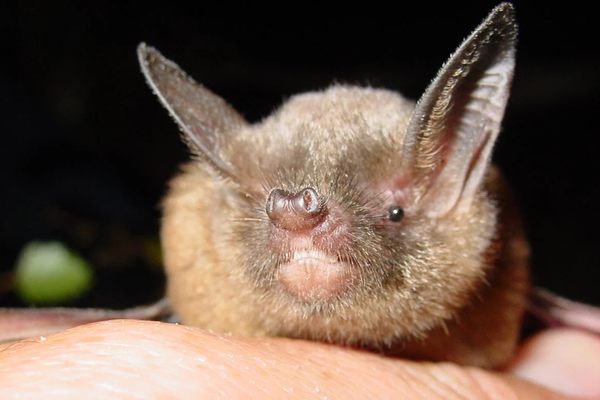Watch This Beautiful, Chaotic Bat Ballet
Scientists have found that bats collide into each other more often than they thought.
As the summer sun sets in central Texas, you may see a dark, ominous cloud undulating in the sky. But this is no cloud of smoke. It’s a colony of Brazilian Free-Tailed Bats emerging from their limestone lair—the sound of their beating wings like millions of pieces of paper rustling in the wind.
These medium-sized, broad-eared, reddish-black bats fly 50 miles every night for their evening meal of moths, beetles, flying ants, and other summer insects. The magnificent exodus captured in the video above lasts mere minutes, the bats flying in close proximity and at rapid speeds averaging four meters (13 feet) per second. But, what you can’t see with the naked eye is a chaotic dance of bats colliding, recovering, and moving together in one gigantic swarm.
“We have found, shocking to us, that bats crash into each other quite often,” scientist Nickolay Hristov says in the video filmed and produced by bioGraphic.
Brazilian Free-Tailed Bats, species Tadarida brasiliensis, roost closely together in groups of dozens to millions. They arrive in central Texas in the spring from Mexico and Central America, taking up homes in caves, mine tunnels, wells, and even houses. While these bats’ long, slender wings are efficient for long distance flights, the morphology is not optimal for maneuvering around other individuals and obstacles in flight paths, explains Hristov.
Scientists Hristov and Louise Allen wanted to understand what was happening in a column of flying bats. In order to study the flight patterns, they use advanced high-speed and thermal cameras originally developed for military purposes to observe the thousands of individual bats as they pour out of the cave. After collecting the footage, Hristov and Allen create visual computer models to track and analyze the flying behavior.
At the 5:20-mark yo can see the bats bumping and smashing into each other in slow-motion. Even though the bats crash, the scientists have found that few, if any, become injured.
“It’s a messy situation, but generally it’s very safe and it works well,” Hristov says.
Every day we track down a Video Wonder: an audiovisual offering that delights, inspires, and entertains. Have you encountered a video we should feature? Email [email protected].







































Follow us on Twitter to get the latest on the world's hidden wonders.
Like us on Facebook to get the latest on the world's hidden wonders.
Follow us on Twitter Like us on Facebook